This article by David Lyell originally appeared in Modern Machine Shop magazine.
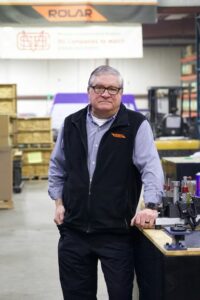
After leaving his position as an automotive industry executive, Russell purchased Rolar Products Inc., a small shop in Muskegon, Michigan, that largely focused on discrete part production for the refrigeration industry. When Russell took over, the shop had four fulltime employees and operated a handful of CNC machining centers, as well as several older screw machines.
The screw machines might have been the obvious place to start for a new owner looking to modernize his facility. But in the few years since he made the purchase, Russell has found hidden opportunities across nearly every aspect of the business. The challenge? How to take advantage of these opportunities and bring Rolar Products up to speed in a way that was both manageable and sustainable.
Today, just seven years after Russell purchased Rolar Products, the company employs 33 people full-time and operates out of a new, 60,000-square-foot, $3.2-million building. To get there, Russell focused on four key growth opportunities:
During the early days of the ownership transition, the need for an ERP solution was not obvious to all. As recently as 2016, the number of jobs running on the shop floor at any given time was limited to a handful, and tracking those jobs in Excel seemed more than sufficient.
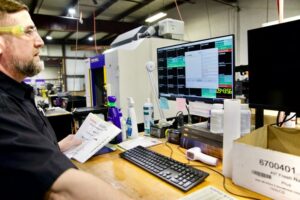
But Russell knew better. At his previous employer, Russell had served on a committee tasked with selecting and implementing shop management software. Through this experience, Russell was able to quickly identify RealTrac as the ideal ERP solution for Rolar Products. He had seen firsthand, the importance of tracking production costs for international customers at scale and wanted similiar capabilities for his shop. “They wanted to know the cost per millimeter of every MIG weld and every ounce of material, down to the tenth of a cent,” Russell says.
The right software would provide a solid foundation for manufacturing capacity growth at Rolar Products. Perhaps more importantly, it would also align current and future employees with the operating style of Rolar’s new management.
When it comes to production tracking, one of the common fears among machine shop employees is the “big brother” stereotype — that feeling that individual performance is being monitored every second of the day. Recognizing the value of transparency for motivating rather than creating anxiety, Russell chose to share Realtrac financial data for every job. As employees recognized the impact of their work on the bottom line, conversation shifted from worries about efficiency tracking to what everyone could accomplish together.
Implementing ERP laid the groundwork for machine monitoring with Datanomix software, which tracks cycle times, time to first part, throughput and other utilization metrics. The immediate effect for Rolar Products, Russell says, was reducing the average time to first part.

As the data began to roll in, it challenged some employees’ understanding of what it meant to “warm up.” Some were jumping in and getting initial setups done right away, while others were allowing the machines to warm up far longer than the two or three minutes cited in the machines’ manuals. Once these disparities were revealed — and broadcast on a central display — the operators realized of the importance of this average time to first part, Russell says. Improvements across the entire shop were immediate.
Overall, new software has been critical to managing the company’s growing workload, which consists of an average of 300 open jobs at any given time, Russell says.
With software and production processes under control, Russell set out to expand capabilities and capacity through acquisitions. In 2017, he purchased Koppell Engineering, a specialist in high-volume turning. Along with Koppel’s established customers, he credits the acquired shop’s multitasking and quick-turn capability for helping Rolar double revenue before the end of the year.
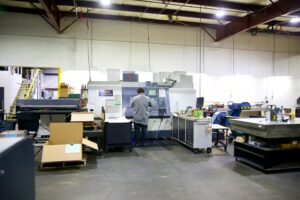
In fact, an appreciation of how multitasking machines can accelerate output may have been the biggest catalyst for Rolar’s growth, Russelll says. Prior to the acquisition, he handled all of the shop’s quoting personally. With new employee skill sets and new equipment on the shop floor, such as a Mazak Integrex 200-IIIS turn-mill, he started to get feedback about how processes could be streamlined. This opened Russelll’s eyes to how the shop could reduce cycle times across an array of parts and, in turn, increase profitability.
“I could have gone and bought those machines one at a time and worked for it,” he says. “We would have invested time and salaries to figure out how to program them, but we inherited those machines, the talent and the customer all at once.”
Instead of incrementally improving production processes, the acquisition of Koppell allowed Russell to immediately improve the shop’s throughput and profitability.
Making parts and dealing with customers require different skill sets, but those skills are never more important to each other than when your shop delivers out-of-spec parts.
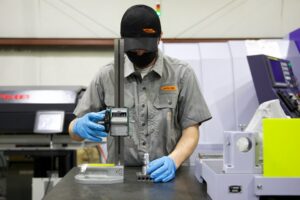
That was the situation Rolar Products faced when a customer rejected an order for 6,000 parts that required feature tolerances of ±0.0002″. Yet, the quality department had checked the parts and found them to be well within tolerance. Rather than argue the point, Russell took the parts back to the shop. After a second check verified that the parts were in-spec, he purchased the same metrology equipment that the customer used. This investment in identical technology eliminated equipment-based discrepancies and established the beginning of a long relationship with the customer.
Building off the successful acquisition of Koppell, Russell began looking for technology solutions to Rolar’s growing number of high-volume turning jobs. The part that brought the situation to a head was a 316 stainless steel bolt with a five-sided head. Preliminary estimates by Russelll produced a cycle time of over seven minutes with the shop’s machinery at that time.
Russell wanted to win the job, so he reached out to his equipment supplier for advice. An application engineer recommended a Swiss-type lathe, estimating that capability to machine the bolt in a single setup would reduce cycle time to 90 seconds.
The drastic cycle-time reduction opened Russell’s eyes to the possibilities of Swiss-type machining. He invested in a Star SX-38 and assigned more than $40,000 worth of parts — parts that were previously not cost effective to produce — before the lathe even landed in the shop.
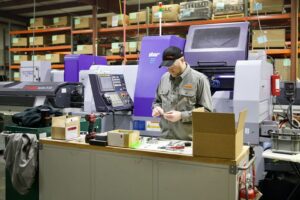
Introducing new technology to the shop floor can be disruptive if other facets of the business are to carry the weight of transition. To avoid sacrificing the momentum of other departments by tasking the shop’s own personnel to learn the new machines, Russell recruited Mike Jones, a seasoned Swiss-type machinist and machine installer. Jones had guided companies through Swiss-type adoption before and saw the potential to grow with Rolar Products.
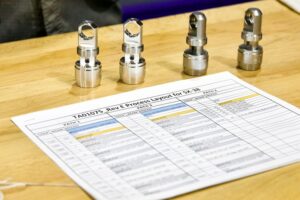
Jones’s experience with both running the machines and training people to use them made the new equipment an instant success at Rolar. Swiss-type machining is today so important to Rolar that the company keeps two Star machines on order at all times, and has plans to add dozens more to its new, expansive facility.
When Russell took over at Rolar Products, he brought with him more than 20 years of experience working at a global manufacturing company where annual revenue grew from $30 million to $1 billion during his tenure. But did that experience guarantee success for a mom-and-pop shop? Not necessarily, he says. But it helps. “I watched (my former company) make some really good investments,” Russell says. “But I also watched them waste a lot of money. And seeing that helped me understand how to run my shop the right way.”